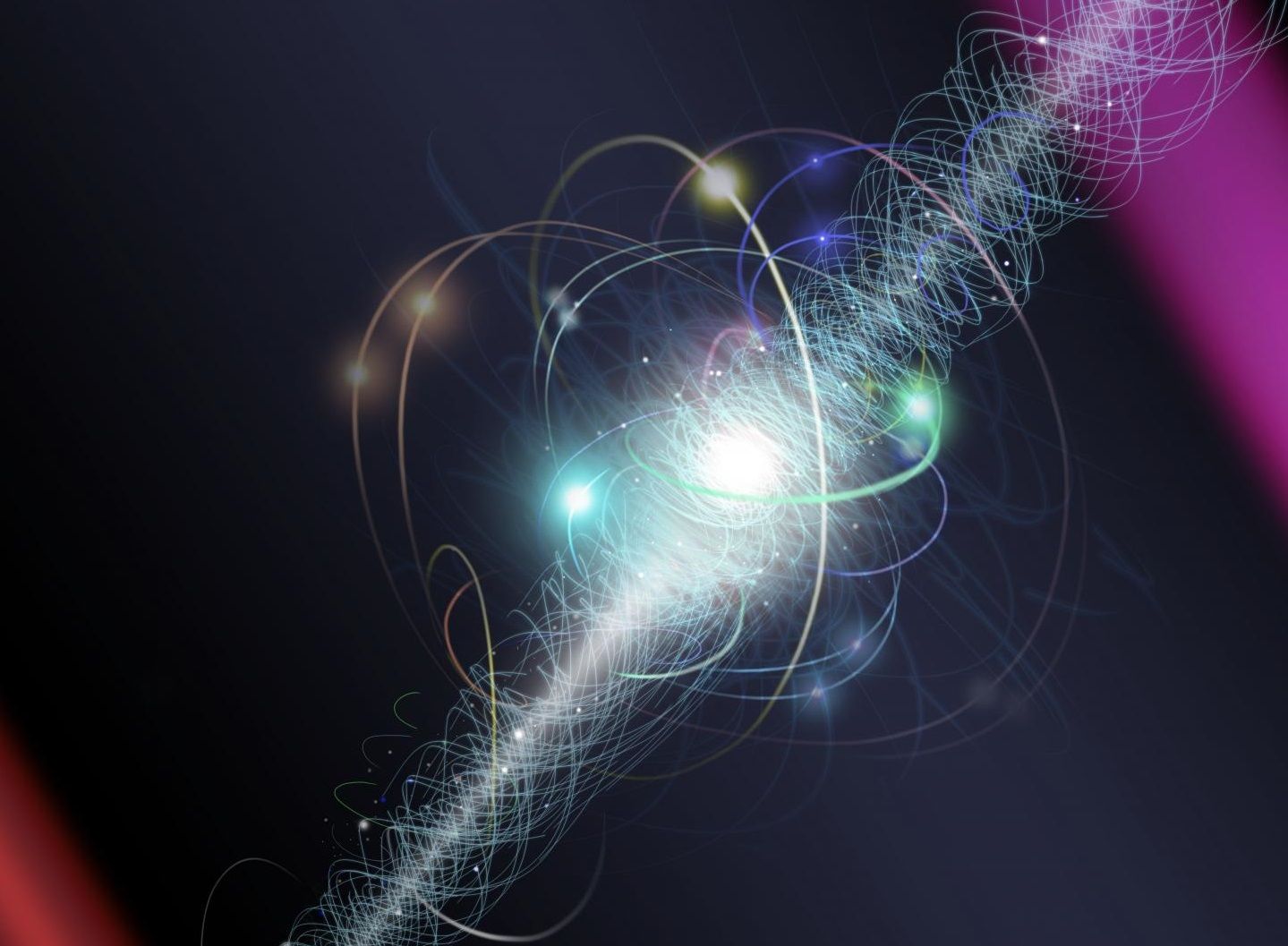
Scientists have made an unprecedented close examination of the electron, providing fascinating new insights into the nature of particles, energy and forces at infinitesimally small scales.
A collaboration led by researchers from Yale, Harvard and Northwestern universities found that the electron's charge has a spherical shape, according to a study published in the journal Nature.
"If we had discovered that the shape wasn't round, that would be the biggest headline in physics for the past several decades," Gerald Gabrielse, a professor in the department of physics and astronomy at Northwestern, director of the Center for Fundamental Physics at Low Energy and an author of the study, said in a statement.
"But our finding is still just as scientifically significant because it strengthens the Standard Model of particle physics and excludes alternative models."
The Standard Model (SM) of particle physics is our best description of the observable universe. It outlines the four fundamental forces that govern nature and all the known elementary particles (those that are not composed of other particles).
While the SM works very well for everything that it describes, it is unable to answer fundamental questions that arise from cosmological observations, such as the nature of dark matter and why matter dominates over antimatter throughout the universe.
"One of the biggest mysteries in physics is why the so-called Standard Model can describe the results of all laboratory tests of it, while being unable to describe some of the most basic features of the universe," Gabrielse told Newsweek.
"The SM as it stands cannot possibly be right because it cannot predict why the universe exists," he said. "That's a pretty big loophole."
This has led to the rise of alternative theories that contain particles and interactions beyond the SM—such as the supersymmetry and grand unified theories—that could potentially explain why the universe is made from matter instead of antimatter.
According to some of these models, hard-to-detect heavy particles in the electron's presence create tiny distortions in the vacuum around it, leading to a slightly squished charge—an unproven phenomenon known as an electric dipole moment (EDM). Therefore, if such a charge shape was detected, it would indicate the existence of these hypothetical particles.
For the latest research—part of a collaborative effort to detect an EDM in the electron known as the Advanced Cold Molecule Electron Dipole Moment (ACME) experiment—the researchers examined the electron in unprecedented detail.
"Almost all of the alternative models say the electron charge may well be squished, but we just haven't looked sensitively enough," Gabrielse said. "That's why we decided to look there with a higher precision than ever realized before."
"Because the SM predicts a very different electron electric dipole moment than do models that attempt to improve upon it, measuring this moment is a great way to get important clues into the great mystery," he said.
In their experiments, the researchers fired a beam of cold thorium-oxide molecules into a chamber the size of a large desk. They then studied the light emitted from the molecules. Twisting light would indicate a squished charge (or an electric dipole moment). However, the light did not twist, leading the team to conclude that the electron's shape was, in fact, round, and confirming the predictions of the Standard Model.
In models that predict new types of particles—such as the supersymmetry and grand unified theories—you would expect to see a large deformation in the electron's charge at ACME's level of precision. But this was not what was observed.
"The Standard Model makes predictions that differ radically from its alternatives, and ACME can distinguish those," David DeMille, who leads the ACME group at Yale, said in the statement. "Our result tells the scientific community that we need to seriously rethink those alternative theories."
The findings imply that the broad class of hypothetical heavier particles predicted by alternative models perhaps don't exist. And if they do, they may not have the properties theorized by scientists that are required to explain the predominance of matter over antimatter in the universe. This has significant implications for our understanding of particle physics, according to the researchers.
"It is very surprising that the SM prediction is right at the accuracy that we have achieved and the other model predictions are wrong, given that the SM is not able to explain how it is possible to have all the matter and antimatter created in the Big Bang keep from annihilating each other so no universe could form," Gabrielse said.
The latest experiment was an order of magnitude more sensitive than a previous experiment that the ACME team conducted in 2014.
"If an electron were the size of Earth, we could detect if the Earth's center was off by a distance a million times smaller than a human hair," Gabrielse explained. "That's how sensitive our apparatus is."
The team plans to keep fine-tuning their instruments to make more and more precise measurements of the electron, which could ultimately cast light on the inherent loopholes of the Standard Model.
"We know the Standard Model is wrong, but we can't seem to find where it's wrong. It's like a huge mystery novel," Gabrielse said. "We should be very careful about making assumptions that we're getting closer to solving the mystery, but I do have considerable hope that we're getting closer at this level of precision."
Uncommon Knowledge
Newsweek is committed to challenging conventional wisdom and finding connections in the search for common ground.
Newsweek is committed to challenging conventional wisdom and finding connections in the search for common ground.
About the writer
Aristos is a Newsweek science reporter with the London, U.K., bureau. He reports on science and health topics, including; animal, ... Read more
To read how Newsweek uses AI as a newsroom tool, Click here.








